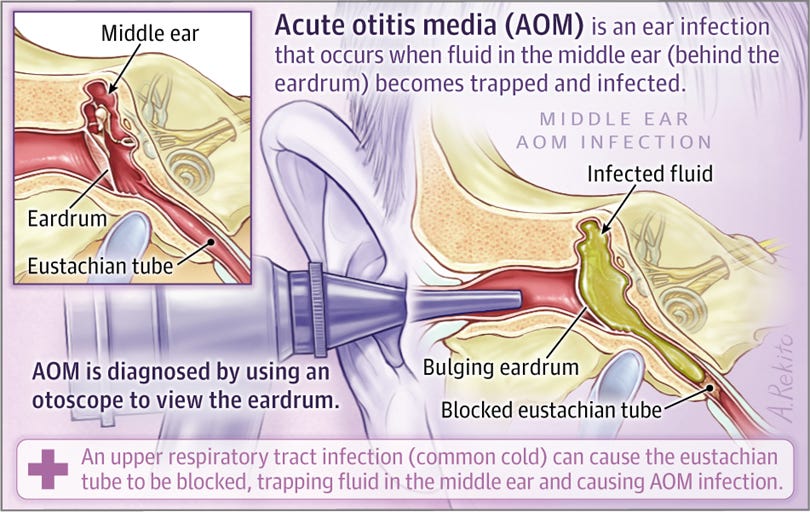Topical Treatment for Acute Otitis Media
To avoid damaging the microbiome and developing antibiotic resistance PREMIUM CONTENT subscriber access
Acute otitis media (AOM) is one of the most common illnesses in pediatric practice. Nearly half of all children will have at least 1 ear infection by the time they reach their second birthday.
In the United States, the usual prescribed treatment for a diagnosis of AOM is high-dose amoxicillin for ten days. In cases of penicillin allergy, the American Academy of Pediatrics (AAP) recommends azithromycin as a single dose of 10 mg/kg or clarithromycin (15 mg/kg per day in 2 divided doses). Other options for penicillin-allergic patients are cefdinir (14 mg/kg per day in 1 or 2 doses), cefpodoxime (10 mg/kg per day, once daily), or cefuroxime (30 mg/kg per day in 2 divided doses). [- A Danishyar, JV Ashurst.]
However, the administration of oral antibiotics can have negative consequences. Most concerning is the elimination of the gut microbiome, making it susceptible to harmful pathogens, such as Clostridioides Difficile .
My past newsletter describes the clinical problems arising from infection with C. Diff and factors raising this risk:
Clostridioides Difficile and Toxic Megacolon. Antibiotics' backlash. There is no free lunch.
“The most important modifiable risk factor for the development of CDI is exposure to antibiotic agents. Clindamycin, third-/fourth-generation cephalosporins, carbapenems, and fluoroquinolones are the most common antibiotics associated with C. difficile infection. Even very limited exposure, such as single-dose surgical antibiotic prophylaxis, increases a patient’s risk of C. difficile colonization and symptomatic disease”
A recent research report describes progress in the development of a single dose topical hydrogel application to the tympanic membrane, to treat AOM.
Keep reading with a 7-day free trial
Subscribe to BioMedWorks’ Newsletter to keep reading this post and get 7 days of free access to the full post archives.




